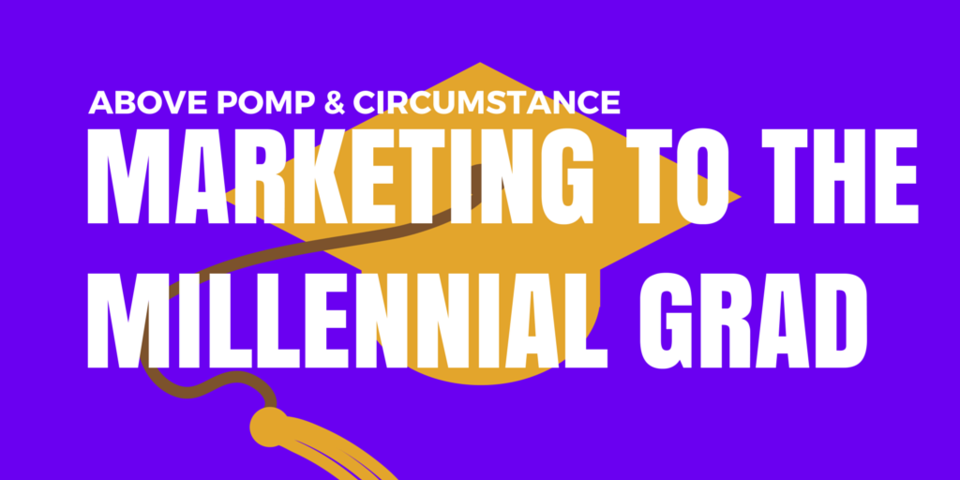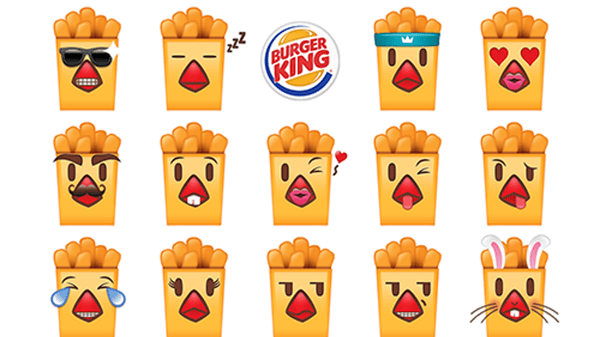Four Strategies for Marketers to Influence Millennials Above and Beyond Pomp and Circumstance

Posted By Colleen Irish on May 29, 2015
In recent weeks, millennials have been graduating from colleges and universities in record numbers, soon to be joining the workforce with steady paychecks and offering one of the most exciting marketing opportunities since the Baby Boom generation. According to a new Pew Research report, more than one-in-three American workers today are millennials (adults ages 18 to 34 in 2015), and this year they surpassed Generation X to become the largest share of the American workforce. So what are brand marketers doing to reach this opportune consumer demographic of 53.5 million-strong, ripe for the taking ― especially as they’re now even better positioned to make their own purchasing decisions?
Many shrewd and insightful brand marketers have been targeting the college millennial audience way before graduation with the idea that today’s savvy college students are tomorrow’s businessmen, doctors, engineers, and teachers. By catching them in their purchasing power formative years, marketers have the opportunity to develop brand loyalty that will only extend their product’s shelf life with this audience well after college.
As mentioned in an interview with college marketing and insights agency (and Tier One client), Fluent, college Millennials today are really straddling two different generations, each with their own set of influences. There’s the perennially misunderstood and underserved, aka the 18-26 year old “Gen Ys” vs. the iPhone crazed, almost 18-19 year old “Gen Zs.” And since this mixed group of millennials has very different motivations and preferences, engaging and influencing this demographic can be extremely tricky and challenging for brands today.
Below are some general pointers to keep in mind when thinking about your marketing and social media strategies for both of these generations, and some examples of brands who are “at the top of the class” in their approach.
Think Digital (and Visual)
The Millennial generation has never known a world without the Internet. While previous generations use social and online media, the younger millennials (Gen Y and Gen Z) rely on this medium to communicate with each other and stay on top of news and trends around the clock. Unlike previous marketing and advertising campaigns that talk “at” the consumer, brands need to truly engage with the younger millennial consumers online and in social channels, such as Instagram, Facebook and Twitter, where conversations and influential behaviors are happening. But what’s most important is finding authenticity and relevance in these efforts, or brands will find themselves easily frowned upon or ignored.
A great example of this relevancy is the recent use of emojis. This past March, Burger King unveiled a branded keyboard of chicken-inspired emoticons to celebrate the return of Chicken Fries (see story). Realizing the mobile-first tendency of the younger millennial consumers, the brand was looking for a way to appeal to this crowd and potentially entice them to share with others. The mobile app keyboard included several dozen emoticons resembling the familiar Chicken Fries box, with a slew of different expressions, including crying and lovestruck emoji.

Chicken Fries: Bustle.com
1800Flowers also leveraged an emoji keyboard for millennial consumers to share sentimental messages with their mothers or other friends and family on Mother’s Day. It’s these authentic ways of engaging with millennials, with clever images and posts that can really fuel sharing and peer influence among this audience.
How did millennials react to these emoji efforts? Several months later, Chicken Fries fans’ reactions on Twitter to this loyalty-building move are still going strong, and 1800Flowers’ Mother’s Day emojis were shared nearly 225,000 times.
Make a Deal
Research has shown that providing special offers targeted to Millennials is another marketing strategy that brands need to be implementing to zoom in on this select group. Fluent data of more than 1,200 college students, has revealed that 94% of students find in-store discounts and sales at least “somewhat influential” in getting them to try a new product.
Computer companies such as Microsoft and Apple understand this concept and both have made efforts to offer special price incentives to students. For instance, Apple has a separate channel called The Apple Store for Education to build student loyalty early on, with the notion that once hooked, the Apple fan will become a repeat customer for years to come. Apple's computers are significantly more expensive than other brands, yet due to its targeted marketing strategies, the brand has greater market share.
Another brand that’s graduated with high honors when it comes to relating to the Millennial audience is car maker, BMW. Its College Grad Incentive program offers soon-to-be college graduates $750 towards the lease or financing of any Certified Pre-Owned BMW, and $1,000 towards the lease or financing of any 2014, 2015, or 2016 model.
Embrace the Power of the Peers
In a time of selfies, YOLO’s and an “always on” world, brands need to appreciate how to appeal to millennials’ emotions and drive them to take action. Considering college students trust word of mouth and recommendations from friends and family who they are in constant contact with online, brands should look for opportunities to allure this extended audience. By appealing to the Gen Y and Gen Z’s interests or emotions, they are most likely to then invoke others to hop on board and be influenced by the same desire to “like” and “share.”
In a recent Tesla Motors video, created by college graduates, a little boy’s dream is depicted as he sits in the driver's seat imagining he's piloting a spaceship. This spot, titled "Modern Spaceship" appeals to the emotional side of millennials, who can put themselves in that same driver’s seat with their own dreams. It’s videos like these that win over the younger consumer’s heart and desires; and in this case, Tesla was lucky enough to get the college-aged Millennials to do the talking for them.
Create Experiences
Although today’s college students have grown up in a world where they’re always plugged in, there’s nothing like the value of real connections and experiences in person. The challenge for brands however, and why they turn to agencies like Fluent, is because they lack authenticity or don’t always know the best approach to take when trying to interact with this audience.
Target scored high with students last summer through its “Bullseye University Live,” a 360-degree experiential campaign that connected with both masses and individuals online and on the ground, including a reality show, social media, pop-ups, and more, to drive retail sales. In under one month, the Bullseye University Live Dorm Room reached 144,000 students at the five colleges, pushing engagement to the next level and generated real-time sales, and most importantly impacted Millennial consumer perception. It’s campaigns like this that spark conversations online while initiating live engagements that click, keeping brands top of mind and building lasting relationships.
As the tail end of the millennials don their caps and gowns, brands are becoming more and more aware of their spending power. The challenge is being authentic while creating compelling content for an audience of digital natives. Although the workforce is being flooded with new Millennial consumers whose perceptions may or may not be already influenced, brands shouldn’t fret. There is still time to start putting these key strategies in place for long lasting relationships and strong brand advocacy. Opportunities to reach this up and coming generation are abound on social media and in the real world (#IRL).
Image Credit
- Chicken Fries: Bustle.com



